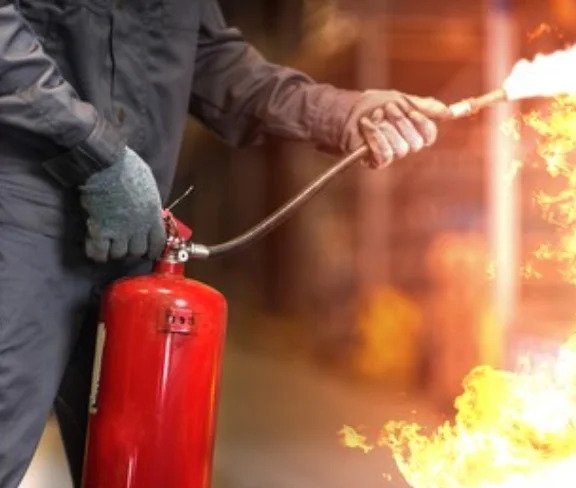Fire audits are essential to ensuring the safety and compliance of any facility, from industrial plants to office buildings. They help identify potential fire hazards, evaluate safety measures, and implement solutions to mitigate risks. To achieve a successful fire audit, it is critical to follow established best practices. This guide outlines actionable tips for implementing an effective fire audit, integrating industry standards, and ensuring compliance with safety regulations.
What Is a Fire Audit?
A Fire Audit is a systematic evaluation of a facility’s fire safety measures, equipment, and protocols. It helps identify potential fire hazards and ensures compliance with fire safety standards. By conducting a thorough fire audit, organizations can minimize risks and create a safer working environment.
Why Is a Fire Audit Important?
Fire audits serve multiple purposes, including:
- Compliance with Regulations: Ensuring adherence to local and international fire safety standards.
- Risk Mitigation: Identifying and addressing fire hazards to prevent incidents.
- Improved Safety: Enhancing the overall safety culture within the organization.
- Cost Savings: Reducing potential losses from fire-related incidents.
Best Practices for Conducting a Fire Audit
To ensure a comprehensive and effective fire audit, organizations should follow these best practices:
1. Define Clear Objectives
Start by establishing the goals of the fire audit. Are you evaluating compliance, identifying hazards, or assessing fire prevention measures? Clearly defined objectives will guide the entire process and ensure that no critical aspect is overlooked.
2. Assemble a Qualified Team
A successful fire audit requires a multidisciplinary team with expertise in fire safety, risk assessment, and regulatory compliance. Engaging a Safety Consultant can provide valuable insights and ensure that the audit is conducted according to best practices.
3. Review Existing Fire Safety Measures
Examine current fire safety protocols, including:
- Fire detection and alarm systems
- Emergency evacuation plans
- Fire suppression systems
- Training programs for employees
Ensure these measures are up-to-date and aligned with the latest safety standards.
4. Conduct a Thorough Site Inspection
Inspect the facility for:
- Potential fire hazards (e.g., flammable materials, faulty wiring)
- Accessibility of fire exits
- Placement and functionality of fire extinguishers and sprinklers
- Compliance with building codes
Document findings and prioritize areas that need immediate attention.
5. Engage Employees in the Process
Employees play a crucial role in fire safety. During the audit, involve staff by:
- Conducting fire safety training sessions
- Encouraging feedback on existing safety measures
- Identifying areas where improvements are needed
6. Utilize Advanced Tools and Technology
Leverage technology to enhance the effectiveness of the fire audit, such as:
- Fire risk assessment software
- Heat mapping tools
- Real-time monitoring systems
These tools can help identify hidden hazards and streamline the audit process.
7. Incorporate Learnings from Other Audits
Review findings from previous fire audits or other safety evaluations, such as a Safety Audit or Hazop Study. This practice ensures continuity and builds on past improvements.
8. Develop a Detailed Action Plan
Based on the audit findings, create a comprehensive action plan that includes:
- Prioritized corrective actions
- Timelines for implementation
- Assigned responsibilities
Ensure the plan is realistic and achievable within the set timeframe.
9. Implement Process Safety Management
Integrating Process Safety Management into fire audits ensures a systematic approach to identifying, assessing, and managing fire risks. It aligns fire safety measures with broader organizational safety goals.
10. Follow Up and Monitor Progress
Fire safety is an ongoing process. Schedule periodic reviews to:
- Monitor the implementation of corrective actions
- Reassess fire safety measures
- Update protocols based on new regulations or technological advancements
Common Challenges in Fire Audits and How to Overcome Them
1. Resistance to Change
Challenge: Employees or management may resist implementing recommendations from the fire audit.
Solution: Emphasize the importance of fire safety and provide training to foster a culture of safety.
2. Incomplete Documentation
Challenge: Lack of proper records can hinder the effectiveness of the audit.
Solution: Maintain detailed documentation of fire safety measures, incidents, and audit findings.
3. Limited Resources
Challenge: Budget constraints may affect the implementation of fire safety measures.
Solution: Prioritize high-risk areas and seek cost-effective solutions.
How Fire Audits Complement Other Safety Practices
Fire audits do not operate in isolation. They work in tandem with other safety evaluations, such as:
- Safety Audits: Assessing overall workplace safety.
- Hazop Studies: Identifying hazards in processes and systems.
- Emergency Drills: Testing the effectiveness of evacuation plans.
Together, these practices create a robust safety framework that minimizes risks and ensures compliance.
Key Takeaways for Effective Fire Audits
- Fire audits are essential for compliance, risk mitigation, and safety enhancement.
- Following best practices ensures a thorough evaluation and actionable results.
- Integrating fire audits with other safety evaluations strengthens overall safety measures.
- Continuous monitoring and improvement are critical to sustaining fire safety.
By implementing these best practices, organizations can proactively address fire safety risks and create a safer environment for employees, visitors, and stakeholders. Adhering to these guidelines ensures compliance and demonstrates a commitment to safety and excellence.



